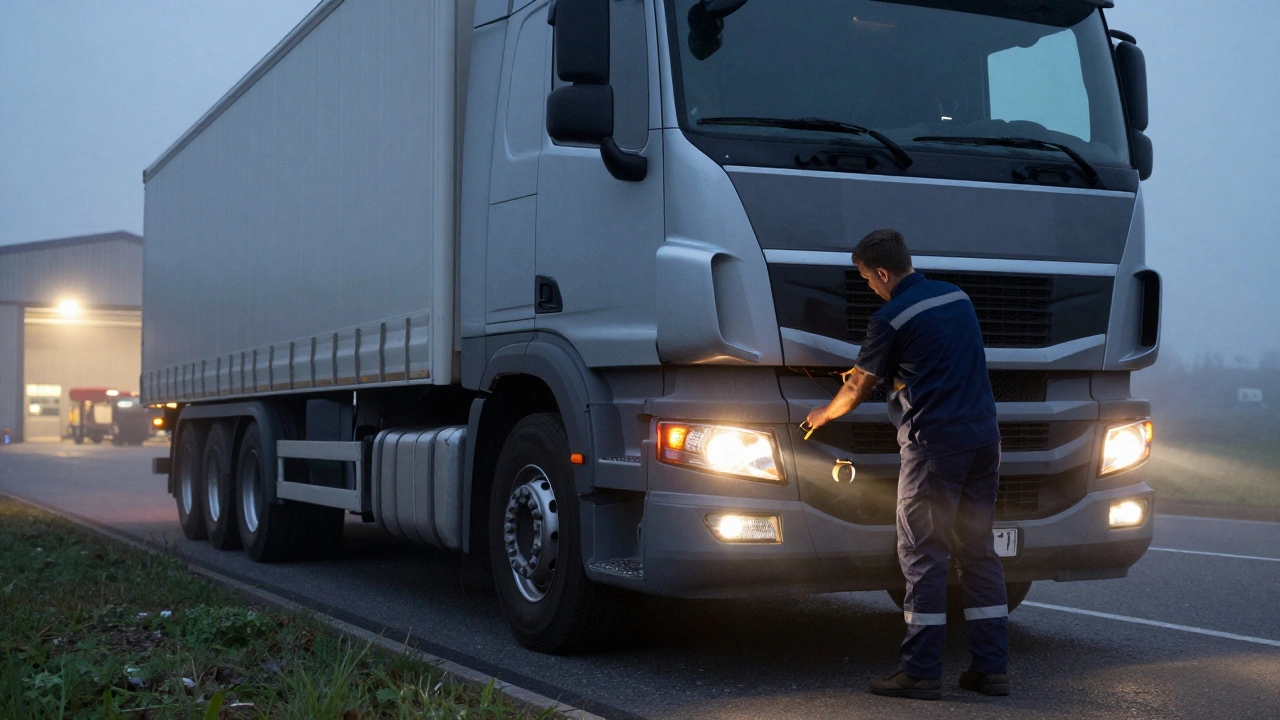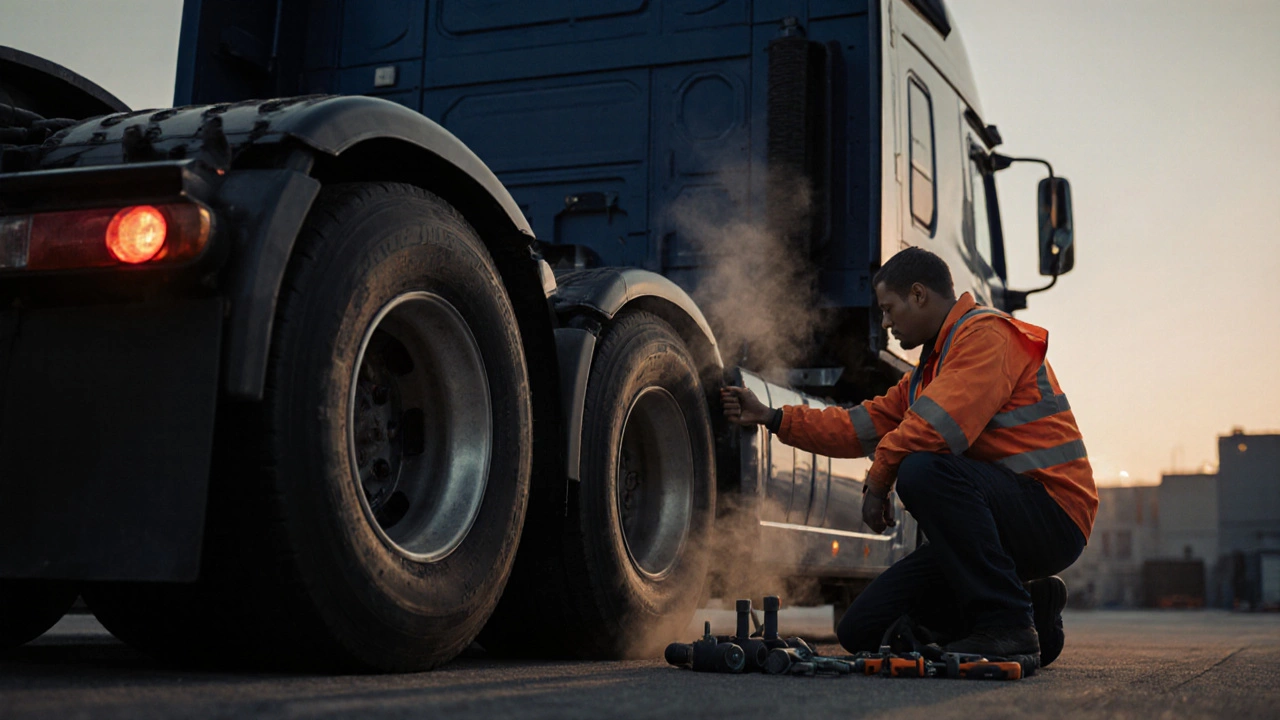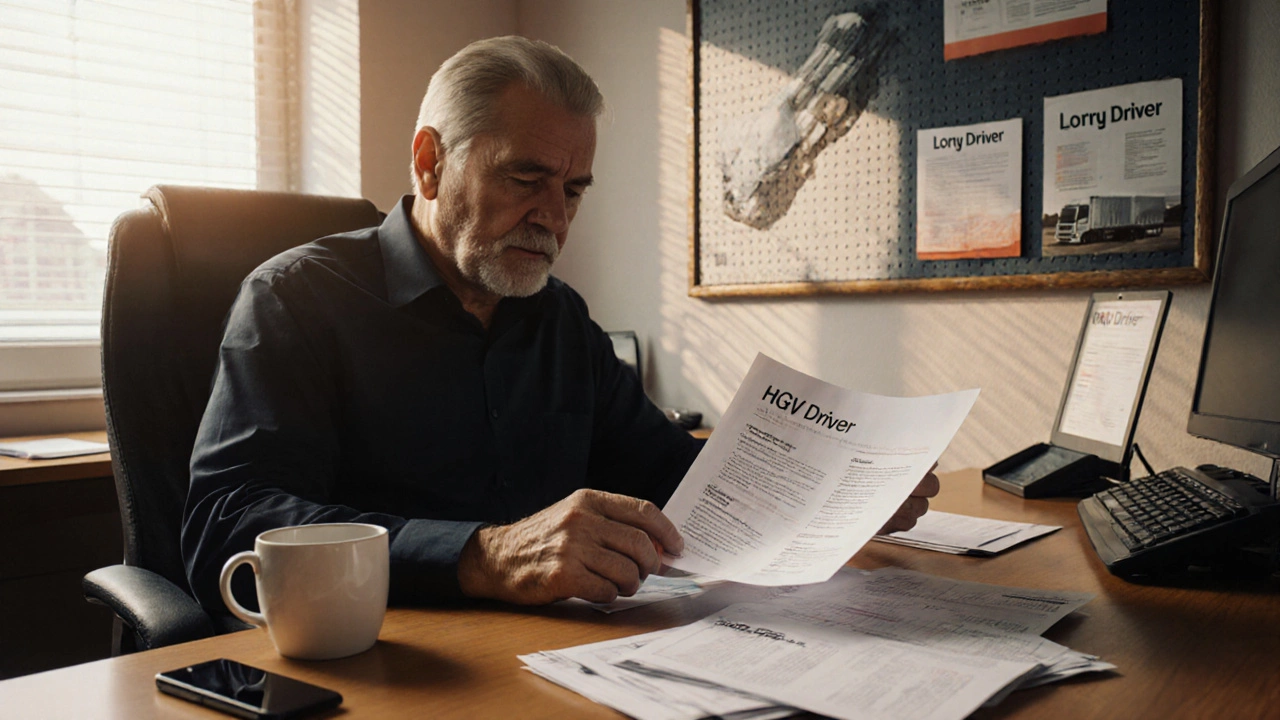HGV licence – what you need to know to get and keep it
If you want to drive a heavy goods vehicle on UK roads, the first thing you need is a valid HGV licence. It’s not just a piece of plastic; it proves you can handle a big rig safely and legally. Below you’ll find the practical steps, the paperwork, and the habits that keep your licence clean.
Getting your HGV licence
The process starts with a provisional licence. You must be at least 18 years old and have a full UK car licence for at least one year. Once you have the provisional HGV licence, you’ll need to pass two key tests: the theory and the practical.
Theory test covers road signs, vehicle handling, and UK traffic laws that apply to heavy vehicles. Study the official Highway Code sections on HGVs, use practice apps, and take at least three mock exams before booking the real one.
Practical test is split into two parts: a off‑road vehicle control test and an on‑road driving assessment. The off‑road part checks your ability to manoeuvre, reverse and stop a large vehicle safely. The on‑road part evaluates your awareness, lane discipline and interaction with other road users.
Many learners skip professional training, but a certified HGV training centre gives you the hands‑on practice you need. Look for a school that offers a combined theory‑plus‑practical package – it saves time and money.
Maintaining and renewing your HGV licence
Once you have the licence, staying compliant is simple if you treat it like any other legal document. Renew the licence every five years – you’ll receive a reminder from the DVLA. The renewal involves a fresh medical check to confirm you still meet the health standards for driving a heavy vehicle.
Keep your driving record clean. Major offenses such as dangerous driving, speed excesses over 20 mph, or any criminal conviction can lead to a point surcharge or even a licence suspension. Minor faults are recorded as penalty points; reaching 12 points within a three‑year period means a disqualification.
Regularly refresh your knowledge. The Highway Code updates occasionally, and new regulations on emissions, vehicle weight and digital tachographs can affect your daily work. Short online refresher courses cost less than a coffee and keep you ahead of inspections.
Finally, protect your licence physically. Store it in a safe, dry place and avoid bending the card. If it gets damaged, apply for a replacement online – the DVLA usually issues a new one within ten days.
Getting an HGV licence is a clear path: meet the age and car‑licence criteria, pass the theory and practical tests, and keep up with renewals and health checks. Follow these steps, stay on top of your driving record, and you’ll be ready to haul safely across the UK.
- December 8 2025
- 0 Comments
- Rowan Cavendish
What Is a HGV Driver? A Clear Guide to the Role, Requirements, and Daily Life
A HGV driver operates heavy trucks that transport goods across the country. This guide explains what the job involves, the licence requirements, training process, pay, and daily realities of being a professional truck driver.
- October 27 2025
- 0 Comments
- Rowan Cavendish
How Does HGV Driving Work? A Clear Guide to HGV Licences, Training, and Daily Operations
Learn how HGV driving works in New Zealand - from getting your licence and training to daily duties and pay. A clear, practical guide for anyone considering becoming an HGV driver.
- October 25 2025
- 0 Comments
- Rowan Cavendish
What Is the Official Title of an HGV Driver?
Learn the exact official title for heavy goods vehicle drivers, the licences required, and how to use the right wording on CVs and job ads.
- May 28 2025
- 0 Comments
- Rowan Cavendish
How Long Does It Take to Learn HGV? Real Timelines and Expectations
Thinking about becoming an HGV driver but wondering how long it actually takes to get qualified? This guide breaks down the timelines for training, what can speed things up or slow you down, and what to expect from start to finish. Find out which steps take the most time, tips to avoid common delays, and how life gets in the way (because it does). Get real-world advice to help you plan smarter and start earning sooner.
- Driving Lessons (41)
- HGV Training (31)
- Driving Test Tips (31)
- Driving Test Booking (26)
- Driving Licence Renewal (23)
- Driving Theory Test (21)
- Pass Plus Course (15)
- Driving Tips (15)
- Intensive Driving Course (15)
- Driver Licensing (14)
Categories
- December 2025 (12)
- November 2025 (13)
- October 2025 (21)
- September 2025 (5)
- August 2025 (8)
- July 2025 (30)
- June 2025 (30)
- May 2025 (30)
- April 2025 (31)
- March 2025 (30)
- February 2025 (28)
- January 2025 (34)
Archives
- driving lessons
- driving test
- driving tips
- intensive driving course
- driving test tips
- HGV training
- learn to drive
- driving theory test
- driver training
- driving test booking
- pass driving test
- HGV driving
- road safety
- driving license renewal
- Virginia driving test
- learner drivers
- safe driving
- Virginia driver's license
- driving license
- learning to drive




